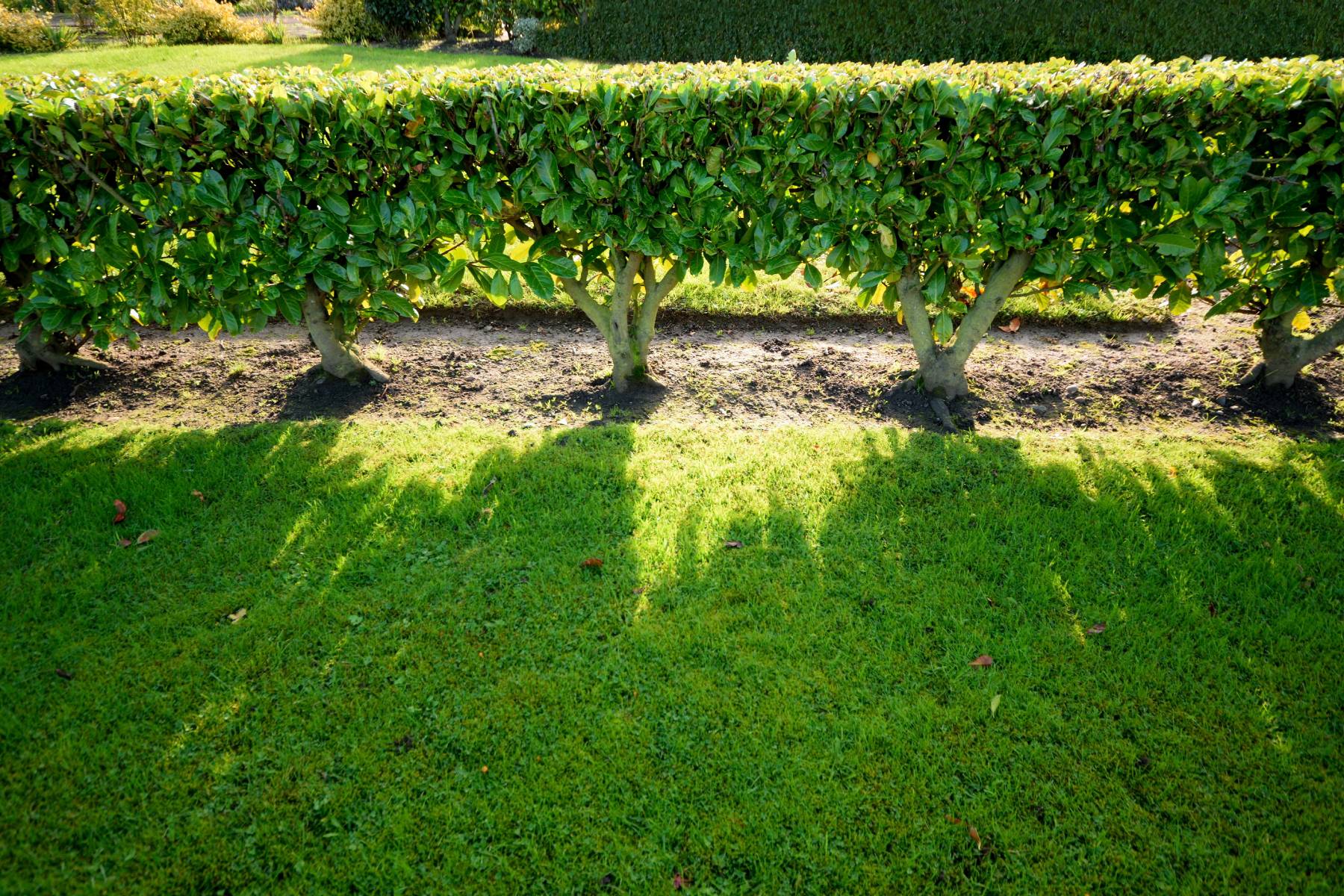How To Build A Living Fence: A Complete Guide

Table of Contents
Planning Your Living Fence
Before you even touch a shovel, careful planning is crucial for a successful living fence. This section covers the essential steps to ensure your green barrier thrives.
Choosing the Right Plants
Selecting the appropriate plants is the cornerstone of a thriving living fence. Consider these factors:
- Climate: Choose plants that are hardy in your specific climate zone. Consider factors like average rainfall, temperature extremes, and frost susceptibility.
- Soil Type: Different plants thrive in different soil types. Test your soil's pH and amend it if necessary to create optimal growing conditions. Sandy soil might require more organic matter, while clay soil may need improved drainage.
- Desired Height and Density: Do you want a tall, dense privacy screen or a shorter, more open hedge? This determines your plant choices. Fast-growing options will give you quicker results, while slower-growing varieties may require more patience.
- Maintenance Needs: Some plants require more pruning and maintenance than others. Consider your time commitment and choose accordingly.
Here are some examples of plants suitable for living fences:
- Fast-growing options: Willow, bamboo, Leyland Cypress
- Slower-growing options: Hornbeam, privet, beech
- Evergreen choices: Holly, yew, arborvitae (providing year-round screening)
- Deciduous choices: Hawthorn, hazel, flowering quince (offering seasonal color changes)
- Drought-tolerant varieties: Lavender, rosemary (ideal for drier climates)
Choosing plants appropriate for your local climate and soil conditions is vital for ensuring their successful growth and the longevity of your living fence.
Site Preparation
Proper site preparation sets the stage for a healthy living fence. Follow these steps:
- Clearing the Area: Remove all weeds, grass, and debris from the planting area. This prevents competition for resources and ensures your plants get a strong start. Consider using a weed barrier fabric to further suppress weed growth.
- Amending the Soil: Improve your soil's structure and fertility by adding compost, well-rotted manure, or other organic matter. This enhances drainage, aeration, and nutrient content.
- Testing Soil pH: Conduct a soil test to determine your soil's pH level. Adjust the pH if necessary using lime (to raise pH) or sulfur (to lower pH), as many plants have specific pH requirements.
Proper soil preparation ensures your plants have the best possible chance of establishing strong roots and growing vigorously, resulting in a dense and healthy living fence.
Designing Your Fence
Before planting, visualize your ideal living fence. Consider:
- Height and Length: Determine the desired dimensions of your living fence based on your needs for privacy and visual screening.
- Style: Will your living fence be straight, curved, or follow the contours of your property? Consider creating different heights and layers for visual interest.
- Plant Variety: Incorporating different plant species adds visual interest and can create a multi-layered effect. For instance, taller plants at the back, medium-height plants in the middle, and shorter plants in the front.
- Access Points: Plan for access points or gates if needed.
A well-designed living fence complements your landscape and enhances its aesthetic appeal. Consider the overall style of your garden and choose a design that integrates seamlessly with the surrounding environment.
Planting Your Living Fence
Now for the hands-on part! Careful planting techniques are key to a successful living fence.
Planting Techniques
Follow these steps for optimal planting:
- Digging Holes: Dig holes twice as wide and as deep as the plant's root ball. This allows for easy root establishment and prevents root circling.
- Spacing Plants: Space plants according to the mature size of the chosen species. Overcrowding can lead to competition and weak growth. Check the plant tag for spacing recommendations.
- Watering Deeply: Water deeply after planting to settle the soil around the roots and promote immediate establishment.
Consistent and appropriate watering during the initial establishment period significantly impacts the success of your living fence.
Supporting Young Plants
Newly planted saplings often benefit from support, particularly fast-growing varieties or those in exposed locations.
- Types of Supports: Use stakes, wire mesh, or other suitable supports to keep young plants upright and prevent damage from wind or animals.
- Securing Plants: Gently tie plants to supports using soft materials like garden twine to avoid damaging the stems.
Support helps young plants develop strong stems and grow straight, creating a more even and attractive living fence in the long run.
Maintaining Your Living Fence
Regular maintenance ensures your living fence remains healthy, vibrant, and aesthetically pleasing.
Watering and Fertilizing
Consistent watering and fertilization are essential for a thriving living fence.
- Watering: Water deeply and regularly, especially during dry periods. The frequency depends on your climate and soil type. Adjust watering frequency based on the weather and the plants' needs.
- Fertilizing: Apply a balanced fertilizer in spring to promote healthy growth. Choose a fertilizer formulated for shrubs or hedges.
Adequate watering and fertilization contribute to the vigorous growth and health of your living fence plants.
Pruning and Shaping
Regular pruning maintains the shape, size, and density of your living fence.
- Pruning Techniques: Use hedging shears for a neat, formal look, or hand pruners for more detailed shaping.
- Timing: The best time to prune depends on the plant species. Generally, late winter or early spring is ideal for many plants.
Regular pruning keeps your living fence looking its best and promotes denser growth.
Pest and Disease Control
Regular inspections help identify and address potential pest or disease problems promptly.
- Common Pests and Diseases: Be aware of common pests (aphids, spider mites) and diseases (leaf spot, powdery mildew) that can affect living fences in your area.
- Control Methods: Use organic control methods whenever possible, such as insecticidal soap or neem oil. If necessary, use chemical controls according to label instructions.
Early detection and appropriate pest and disease control are crucial to protect your investment and maintain the health of your living fence.
Conclusion
Building a living fence is a rewarding project offering beauty and environmental benefits. By following these steps – carefully planning, selecting the right plants, and maintaining them properly – you can create a stunning, natural boundary enhancing your property for years to come. Start planning your own beautiful and sustainable living fence today! Learn more about different living fence designs and plant selections to find the perfect option for your landscape. Remember, a well-maintained living fence is a valuable addition to any property and a testament to your green thumb!

Featured Posts
-
 Spring Valley Cruises Past Spring Mills With 88 36 Win
May 29, 2025
Spring Valley Cruises Past Spring Mills With 88 36 Win
May 29, 2025 -
 Second Suspect Arrested In Fatal Seattle Park Shooting
May 29, 2025
Second Suspect Arrested In Fatal Seattle Park Shooting
May 29, 2025 -
 Shining Revelry Why Completing The Set Is So Difficult
May 29, 2025
Shining Revelry Why Completing The Set Is So Difficult
May 29, 2025 -
 Are Albertas Oil Levies Enough To Cover Orphan Well Costs
May 29, 2025
Are Albertas Oil Levies Enough To Cover Orphan Well Costs
May 29, 2025 -
 Entendiendo La Presencia De Victor Fernandez
May 29, 2025
Entendiendo La Presencia De Victor Fernandez
May 29, 2025
